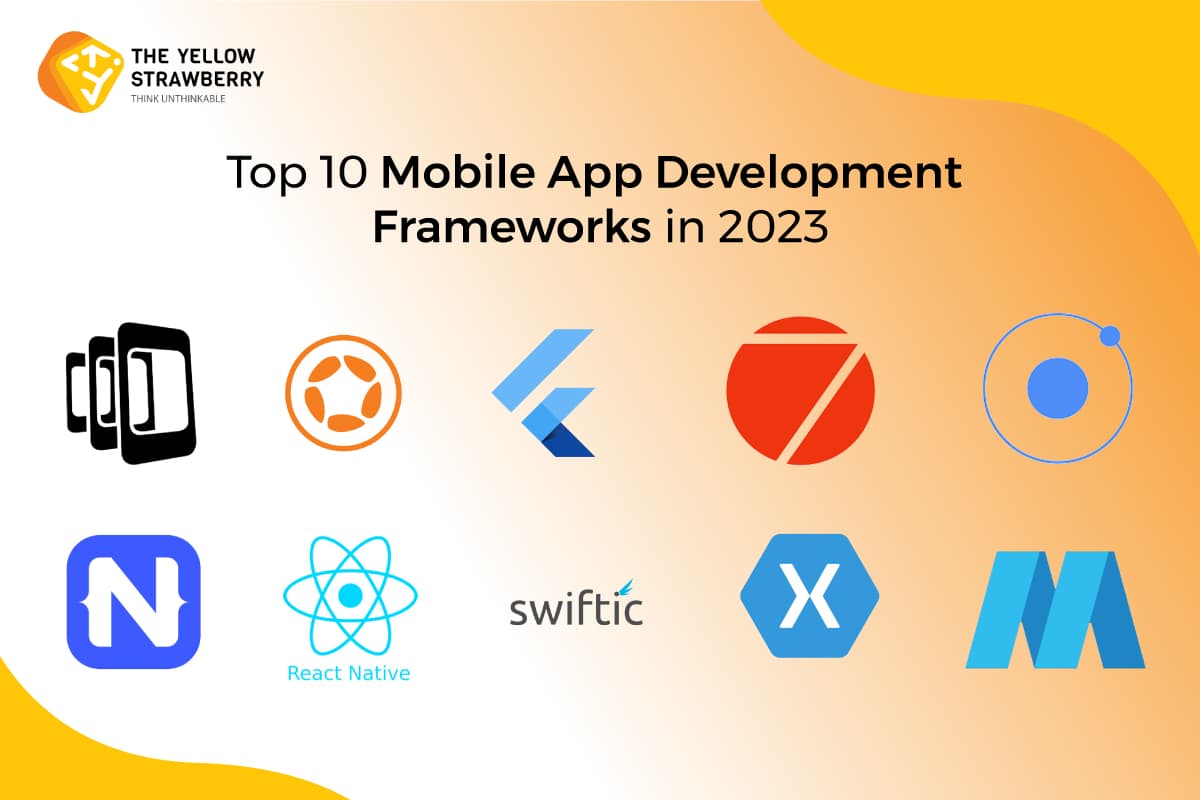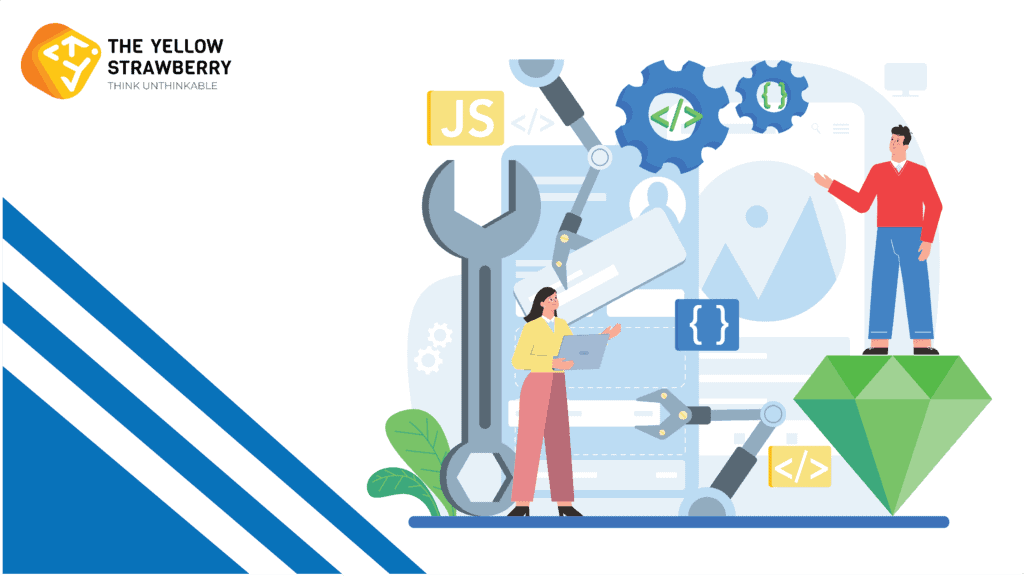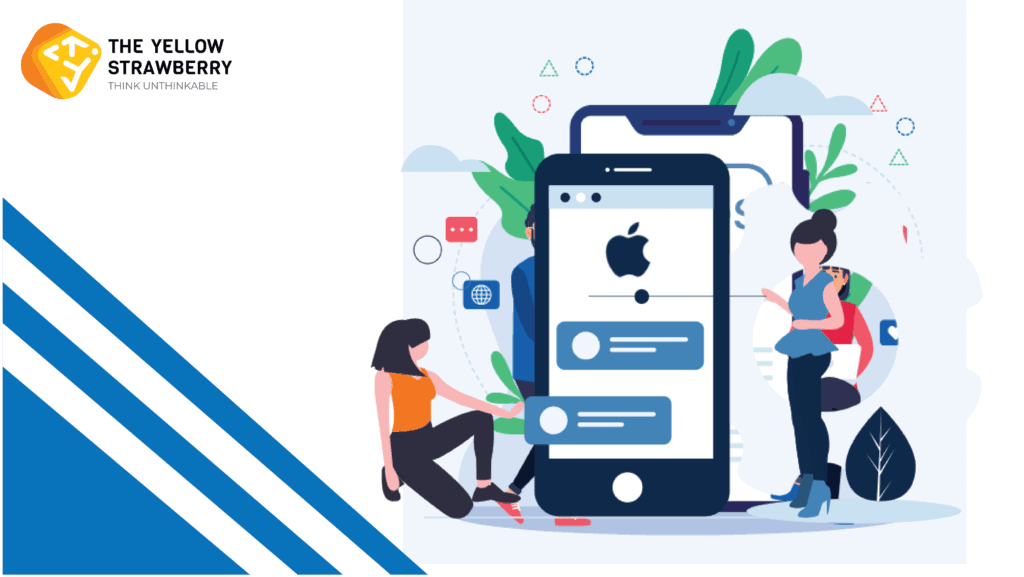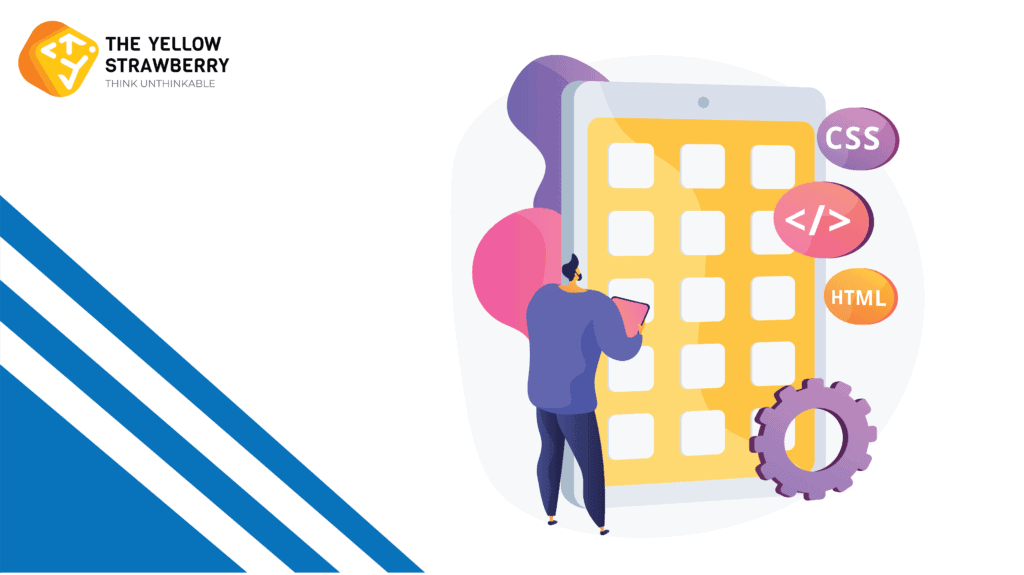Mobile app development frameworks are tools and libraries that allow developers to create mobile apps for a specific operating system or platform, such as iOS or Android. These frameworks provide a structured and standardized way to build and maintain mobile apps, helping developers to create high-quality and feature-rich apps more efficiently.
There are several reasons why mobile app development frameworks matter:
-
Efficiency
Frameworks provide developers with pre-built components and tools, allowing them to focus on the app’s core functionality rather than reinventing the wheel. This can save time and effort, especially for developers new to mobile app development.
-
Consistency
Frameworks provide a standard way of doing things, which can help ensure that apps are consistent in design, functionality, and performance. This can be particularly important for organizations with multiple developers working on the same project.
-
Compatibility
Mobile app development frameworks are designed to be compatible with specific operating systems and platforms, so developers can be confident that their apps will work as intended on the target devices.
-
Support
Most mobile app development frameworks have strong communities of developers and users who can support and assist with any issues or questions. This can be a valuable resource for developers who are new to the framework or experiencing problems.
Overall, mobile app development frameworks are essential for developers looking to create high-quality and feature-rich mobile apps efficiently and consistently.
Why You Should Choose the Right Mobile App Framework for Your Project
Choosing the right mobile app framework for your project is crucial to its success. The right framework can provide a solid foundation for your app, allowing it to be built quickly and efficiently. It can also provide tools and resources to make the development process easier and more streamlined.
On the other hand, choosing the wrong framework can lead to a range of problems. It could result in slower development times, difficulty in customizing and building the app, and even issues with the app’s performance and stability.
Therefore, it is important to do your research and carefully consider which framework is the best fit for your project. Some factors to consider include the type of app you are building, the platforms it will be used on, the development team’s skill level, and the resources and tools available.
By choosing the right mobile app framework, you can set your project up for success and ensure that it is built to the highest standard.
Top 10 Mobile App Development Frameworks should be considered in 2023
-
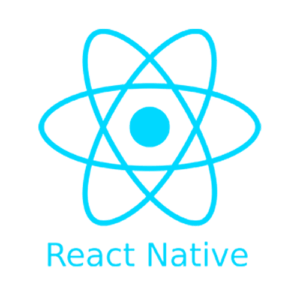 React NativeIn 2023, it is expected that the React Native app development framework will continue to be a popular choice for developers due to its ability to create natively rendered, cross-platform mobile apps. It utilizes a single codebase, allowing developers to easily build apps for both iOS and Android with a consistent user experience. With a strong community support and frequent updates, React Native is expected to remain a reliable and efficient choice for app development in the future.
React NativeIn 2023, it is expected that the React Native app development framework will continue to be a popular choice for developers due to its ability to create natively rendered, cross-platform mobile apps. It utilizes a single codebase, allowing developers to easily build apps for both iOS and Android with a consistent user experience. With a strong community support and frequent updates, React Native is expected to remain a reliable and efficient choice for app development in the future.
Some examples of sites that use React Native for their mobile app development include:
-
-
Airbnb
-
-
Tesla
-
UberEats
-
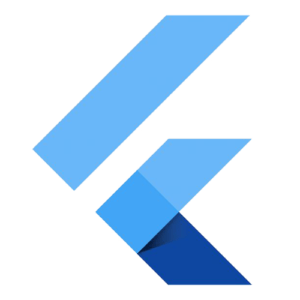 FlutterFlutter is an open-source mobile application development framework created by Google. It allows developers to build native apps for Android and iOS using a single codebase. Flutter is built on the Dart programming language and features a fast development cycle with hot reload, a rich set of customizable widgets, and integrated testing support. It also offers advanced features such as seamless integration with other platforms, support for both material design and Cupertino styles, and the ability to add custom fonts and icons. Flutter app development displays its market potential,Overall, Flutter is a powerful and versatile tool for building high-quality mobile apps quickly and efficiently.
FlutterFlutter is an open-source mobile application development framework created by Google. It allows developers to build native apps for Android and iOS using a single codebase. Flutter is built on the Dart programming language and features a fast development cycle with hot reload, a rich set of customizable widgets, and integrated testing support. It also offers advanced features such as seamless integration with other platforms, support for both material design and Cupertino styles, and the ability to add custom fonts and icons. Flutter app development displays its market potential,Overall, Flutter is a powerful and versatile tool for building high-quality mobile apps quickly and efficiently.
There are many popular apps that have been developed using Flutter, including:
- Google Ads: Google’s advertising platform
- Reflectly: A personal journaling app
- Hamilton Musical: An app for the hit Broadway musical
- Coach Yourself: A self-improvement and goal tracking app
- Hookle: A social media management tool
- Watermaniac: A hydration tracking app
-
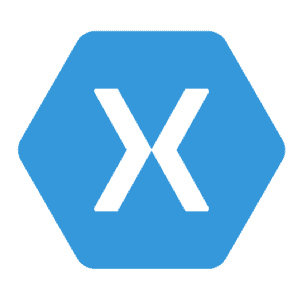 XamarinXamarin is a cross-platform app development framework that allows developers to build native apps for multiple platforms, including iOS, Android, and Windows, using a single codebase. It utilizes the C# programming language and the .NET framework, allowing developers to take advantage of the power and efficiency of those technologies while still being able to create apps that have a native look and feel on each platform. Xamarin also includes a variety of tools and features to streamline the development process, such as a visual designer for building user interfaces and integrated debugging and testing support. Overall, Xamarin is a popular choice for developers looking to build high-quality, cross-platform apps quickly and efficiently.
XamarinXamarin is a cross-platform app development framework that allows developers to build native apps for multiple platforms, including iOS, Android, and Windows, using a single codebase. It utilizes the C# programming language and the .NET framework, allowing developers to take advantage of the power and efficiency of those technologies while still being able to create apps that have a native look and feel on each platform. Xamarin also includes a variety of tools and features to streamline the development process, such as a visual designer for building user interfaces and integrated debugging and testing support. Overall, Xamarin is a popular choice for developers looking to build high-quality, cross-platform apps quickly and efficiently.
There are many examples of successful apps that were developed using the Xamarin framework. Some popular examples include:
- JustGiving: a fundraising platform that allows users to donate to charities and causes they care about.
- Olo: a food delivery and pickup platform that allows users to order from a variety of restaurants and cafes.
- FreshDirect: a grocery delivery app that allows users to shop for and order fresh groceries from local markets.
- The World Bank: a global development organization that offers a variety of apps for tracking and monitoring development projects around the world.
- iHeartRadio: a popular streaming music and radio app that offers a variety of music genres and live radio stations.
-
 IonicIonic is an open-source mobile app development framework based on the popular AngularJS web development framework. It is designed to be used for creating cross-platform mobile apps using HTML, CSS, and JavaScript. Ionic offers a range of UI components and tools that allow developers to create visually appealing and user-friendly mobile apps quickly and efficiently. It also provides access to native device features such as the camera, GPS, and push notifications, making it a powerful tool for building fully-featured mobile apps. Overall, Ionic is a popular choice among developers due to its ease of use, wide range of features, and ability to create apps for multiple platforms.
IonicIonic is an open-source mobile app development framework based on the popular AngularJS web development framework. It is designed to be used for creating cross-platform mobile apps using HTML, CSS, and JavaScript. Ionic offers a range of UI components and tools that allow developers to create visually appealing and user-friendly mobile apps quickly and efficiently. It also provides access to native device features such as the camera, GPS, and push notifications, making it a powerful tool for building fully-featured mobile apps. Overall, Ionic is a popular choice among developers due to its ease of use, wide range of features, and ability to create apps for multiple platforms.
Some examples of apps developed using the Ionic framework include:
- MyFitnessPal: A popular fitness tracking and nutrition app.
- Sworkit: A workout app that provides customizable workout plans.
- Pacer: A health and fitness app that tracks your steps, workouts, and nutrition.
- Fitbit: A fitness tracking app that helps users track their workouts, sleep, and nutrition.
- MyPlate by Livestrong: A nutrition tracking app that helps users track their meals and progress towards their health goals.
-
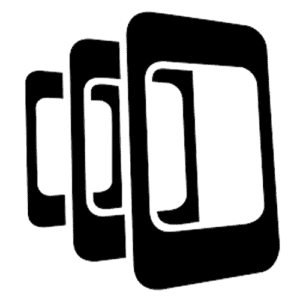 Adobe PhoneGapAdobe PhoneGap is a free and open-source app development framework that allows developers to build cross-platform mobile apps using HTML, CSS, and JavaScript. PhoneGap utilizes the Apache Cordova framework, which provides access to native device features such as the camera, GPS, and accelerometer, through a set of JavaScript APIs. This means that developers can build apps that work on multiple platforms, such as iOS, Android, and Windows, using a single codebase. PhoneGap also offers a cloud-based build service that allows developers to easily build and test their apps on various devices, without the need to install any additional software. Overall, PhoneGap is a powerful and convenient tool for building cross-platform mobile apps, and is suitable for both beginner and experienced developers.
Adobe PhoneGapAdobe PhoneGap is a free and open-source app development framework that allows developers to build cross-platform mobile apps using HTML, CSS, and JavaScript. PhoneGap utilizes the Apache Cordova framework, which provides access to native device features such as the camera, GPS, and accelerometer, through a set of JavaScript APIs. This means that developers can build apps that work on multiple platforms, such as iOS, Android, and Windows, using a single codebase. PhoneGap also offers a cloud-based build service that allows developers to easily build and test their apps on various devices, without the need to install any additional software. Overall, PhoneGap is a powerful and convenient tool for building cross-platform mobile apps, and is suitable for both beginner and experienced developers.
Here are a few examples of apps that have been built using Adobe PhoneGap:
- Wikipedia Mobile: This app allows users to browse Wikipedia articles on their mobile devices. It was built using PhoneGap and released on multiple platforms, including iOS and Android.
- My Tickets: This app is a mobile ticketing solution that allows users to buy and manage event tickets from their phones. It was built using PhoneGap and released on multiple platforms, including iOS and Android.
- Pacer: This app is a fitness tracker that helps users track their steps, calories burned, and other fitness metrics. It was built using PhoneGap and released on multiple platforms, including iOS and Android.
- Hello Weather: This app is a weather forecasting app that provides users with real-time weather data and forecasts. It was built using PhoneGap and released on multiple platforms, including iOS and Android.
- Mendix Go: This app is a mobile business app that allows users to access and manage business processes on the go. It was built using PhoneGap and released on multiple platforms, including iOS and Android.
-
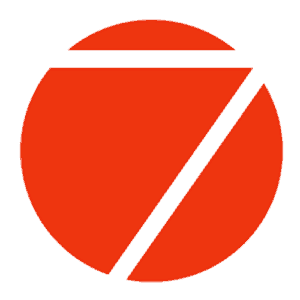 Framework7Framework7 is a popular app development framework that allows developers to create native-like, cross-platform mobile apps using HTML, CSS, and JavaScript. It provides a wide range of features and tools, including a responsive layout system, various UI components, and a powerful router. Framework7 also integrates with popular libraries and frameworks such as Vue.js and React, making it easy to build complex, high-quality apps with minimal effort. Overall, Framework7 is a popular choice for developers looking to quickly and easily build high-performance mobile apps for both iOS and Android devices.
Framework7Framework7 is a popular app development framework that allows developers to create native-like, cross-platform mobile apps using HTML, CSS, and JavaScript. It provides a wide range of features and tools, including a responsive layout system, various UI components, and a powerful router. Framework7 also integrates with popular libraries and frameworks such as Vue.js and React, making it easy to build complex, high-quality apps with minimal effort. Overall, Framework7 is a popular choice for developers looking to quickly and easily build high-performance mobile apps for both iOS and Android devices.
Here are a few examples of apps that have been built using Adobe PhoneGap:
- MyFit: A fitness tracker app that allows users to track their workouts, set goals, and monitor their progress.
- Grocery List: A simple grocery list app that allows users to create and manage their shopping lists.
- Recipe Book: A recipe app that allows users to save and organize their favorite recipes, as well as search for new ones based on various criteria.
- Budget Planner: A financial planning app that helps users track their expenses and create a budget.
- Task Manager: A task management app that allows users to create and organize their to-do lists, set reminders, and track their progress.
-
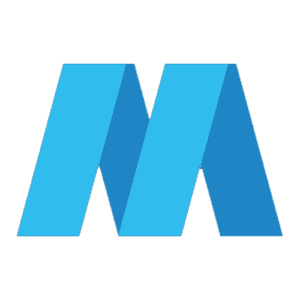 Mobile Angular UIMobile Angular UI is a mobile app development framework that combines AngularJS and Bootstrap to create responsive, touch-enabled mobile applications. It provides a set of directives, services, and components that allow developers to build user interfaces that adapt to different screen sizes and orientations. Mobile Angular UI also integrates seamlessly with other popular libraries such as fastclick.js and overthrow.js, making it a powerful and flexible tool for building mobile apps. Overall, Mobile Angular UI is a useful framework for developers looking to build intuitive and user-friendly mobile applications.
Mobile Angular UIMobile Angular UI is a mobile app development framework that combines AngularJS and Bootstrap to create responsive, touch-enabled mobile applications. It provides a set of directives, services, and components that allow developers to build user interfaces that adapt to different screen sizes and orientations. Mobile Angular UI also integrates seamlessly with other popular libraries such as fastclick.js and overthrow.js, making it a powerful and flexible tool for building mobile apps. Overall, Mobile Angular UI is a useful framework for developers looking to build intuitive and user-friendly mobile applications.
Some examples of apps that have been developed using the Mobile Angular UI framework include:
- Todoist: A popular task management app that allows users to create to-do lists and set reminders for themselves.
- Trello: A project management app that allows users to create boards and cards to organize their tasks and ideas.
- Google Keep: A note-taking app that allows users to create notes, set reminders, and access their notes from any device.
- Pocket: A content management app that allows users to save articles, videos, and other web content to view later on their mobile devices.
- Any.do: A productivity app that allows users to create to-do lists, set reminders, and manage their calendar.
-
 Corona SDKCorona SDK is a cross-platform app development framework that allows developers to create mobile and desktop applications using a single codebase. It utilizes the Lua programming language and provides a variety of tools and features to streamline the development process. With Corona SDK, developers can easily create interactive and engaging applications for both iOS and Android devices, as well as for desktop platforms like Windows and Mac. The framework also offers a comprehensive set of APIs and libraries for creating custom user interfaces, managing data and storage, and integrating with various services and APIs. Overall, Corona SDK is a powerful and efficient tool for building high-quality apps with minimal effort.
Corona SDKCorona SDK is a cross-platform app development framework that allows developers to create mobile and desktop applications using a single codebase. It utilizes the Lua programming language and provides a variety of tools and features to streamline the development process. With Corona SDK, developers can easily create interactive and engaging applications for both iOS and Android devices, as well as for desktop platforms like Windows and Mac. The framework also offers a comprehensive set of APIs and libraries for creating custom user interfaces, managing data and storage, and integrating with various services and APIs. Overall, Corona SDK is a powerful and efficient tool for building high-quality apps with minimal effort.
Some examples of apps that have been developed using the Corona SDK framework include:
- Color Switch – a popular mobile game in which players must navigate through various obstacles by matching the color of their character to the color of the obstacle.
- The Room – a puzzle game that requires players to solve intricate and challenging riddles to progress through the game.
- Weatherbug – a weather forecasting app that provides detailed forecasts, alerts, and radar maps for locations around the world.
- Sonic Dash – a running game that features the popular character Sonic the Hedgehog as the main character.
- To Do List – a task management app that allows users to create and organize their to-do lists, set reminders, and track their progress.
-
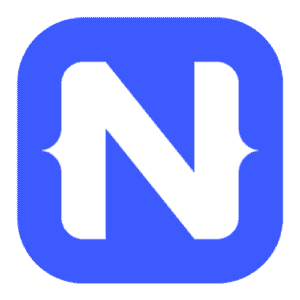 NativeScriptNativeScript is a cross-platform app development framework that allows developers to build native mobile apps for iOS and Android using a single codebase. It uses JavaScript, TypeScript, or Angular as the primary programming language, and utilizes native user interface components to create a seamless and intuitive user experience. NativeScript also offers robust features such as live reload, hot module replacement, and access to native APIs, making it a popular choice among developers looking to build high-quality, native mobile apps efficiently.
NativeScriptNativeScript is a cross-platform app development framework that allows developers to build native mobile apps for iOS and Android using a single codebase. It uses JavaScript, TypeScript, or Angular as the primary programming language, and utilizes native user interface components to create a seamless and intuitive user experience. NativeScript also offers robust features such as live reload, hot module replacement, and access to native APIs, making it a popular choice among developers looking to build high-quality, native mobile apps efficiently.
Some examples of apps developed using NativeScript include:
- JustWink: A social networking platform for connecting with friends and sharing photos and messages.
- Checkout 51: A grocery savings and cashback app that allows users to save money on their shopping purchases.
- Strava: A fitness tracking app for recording and analyzing workouts, connecting with friends, and setting personal goals.
- Renters Warehouse: A property management app for landlords and tenants to manage rentals and communicate with each other.
- Appsee: A mobile analytics and user experience optimization platform for app developers.
-
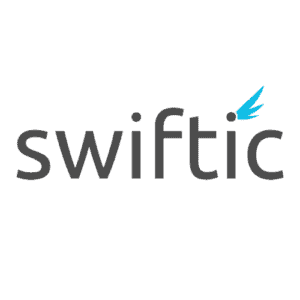 SwifticSwiftic is a popular app development framework that allows developers to easily create and customize mobile apps for businesses and organizations. It offers a range of features and tools, including templates, drag-and-drop design capabilities, and integrations with popular platforms like Facebook and Google Maps. Swiftic also provides analytics and marketing tools to help businesses track and grow their app’s user base. Overall, it is a powerful and user-friendly platform for creating high-quality, feature-rich mobile apps.
SwifticSwiftic is a popular app development framework that allows developers to easily create and customize mobile apps for businesses and organizations. It offers a range of features and tools, including templates, drag-and-drop design capabilities, and integrations with popular platforms like Facebook and Google Maps. Swiftic also provides analytics and marketing tools to help businesses track and grow their app’s user base. Overall, it is a powerful and user-friendly platform for creating high-quality, feature-rich mobile apps.
Here are some examples of apps that have been developed using the Swiftic app development framework:
- Salon Book: A app for salon and spa businesses that allows customers to book appointments, view services and pricing, and track loyalty rewards.
- My Pizza: A app for a pizza restaurant that allows customers to place orders, view menus and specials, and track loyalty rewards.
- Local Market: A app for a farmers market or small grocery store that allows customers to browse and purchase products, view store information and hours, and track loyalty rewards.
- Pet Grooming: A app for a pet grooming business that allows customers to book appointments, view services and pricing, and track loyalty rewards.
- Fitness Club: A app for a gym or fitness club that allows members to track their workouts, view class schedules, and book appointments with personal trainers.
Conclusion:
In conclusion, mobile app development frameworks are essential tools for building high-quality and feature-rich mobile apps efficiently and consistently. It is important to choose the right framework for your project, considering factors such as the type of app, the platforms it will be used on, the development team’s skill level, and the resources and tools available. Some of the top mobile app development frameworks to consider in 2023 include React Native, Flutter, and Xamarin, all of which offer strong communities of support, efficient development cycles, and a range of features and customization options. Ultimately, the right mobile app framework can help set your project up for success and ensure that it meets the needs and expectations of users.
Use of Apple Watch
The watch apps depend on the particular specifics of the user. The maker wants a whole new mindset when making an Apple watch. The watch provides multiple features to the user, for instance:
-
Health Tracker
-
Quick access to details
-
Action rings for regular activities
-
Complete iPhone pairing
-
Complexity is low
In terms of the number of displays, types of users, and the use of sensors, small complexity apps are usually low. Mobile applications typically take between 100-300 hours to build with low complexity.



